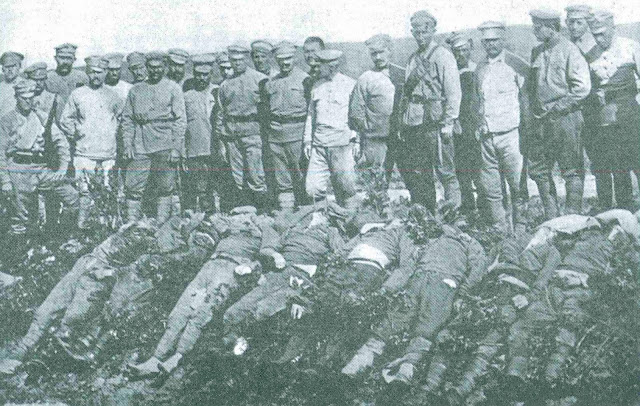The remains of a Japanese soldier were unearthed after a brutal cave-in at the end of the Battle of Okinawa in the Pacific War in 1945, on November 6-7, 1950, on the bluff where thousands of Japanese committed suicide during the Battle of Okinawa. The Battle of Okinawa was a series of bloody battles that saw a sharp increase in casualties, especially among local residents who were caught in the crossfire. In the southern part of Okinawa Island, where the fighting was most intense, many people gathered in caves to hide. The Japanese retreated to new fortifications and forced wounded soldiers and civilians with grenades and poison to commit suicide rather than surrender, and on June 23, General Ushijima committed seppuku.

During the first week after landing on Okinawa Island on April 1, 1945, the U.S. invasion met little resistance, capturing the northern and central parts of the island; on April 8, U.S. troops stormed into the southern part of the island, where the first major Japanese defensive line was built, a battle on a hillside ridge that became the bloodiest white battle in the Pacific War It became. Despite the superior firepower of the American forces, the Japanese were protected by steel-walled bunkers. Each bunker had to be attacked and blown up, inflicting heavy casualties on both sides. The Americans destroyed one line of bunkers and then another, killing and destroying again and again.
Only when the Japanese abandoned their bunkers and turned to attack were the Americans able to invade. The Japanese launched a counterattack on April 12, when some 185 Japanese kamikaze suicide planes attacked the U.S. fleet, and six battalions of Japanese troops stormed American positions. The kamikaze planes sank the landing craft and wounded one battleship, three other destroyers, and eight other ships. Six Japanese battalion assaults were unable to escape and return to formation.
On April 13, the United States announced the sudden death of President Franklin D. Roosevelt. The American military was shocked into silence. In late May, a torrential downpour turned Okinawa into a quagmire similar to the tragic trenches of World War I. The Japanese army refused to surrender, and the Japanese army was forced to surrender. The Japanese forces refused to surrender and were determined to continue the war. The U.S. bombardment intensified, and by early June, the Americans claimed to have killed some 62,000 more Japanese, taking only 465 prisoners. The last Japanese resistance fighters hid deep in caves, where American troops made extensive use of flamethrowers and high-performance explosives. Isolated and unable to mount organized resistance, the Japanese positions were either buried alive with explosives or burned to the ground with flamethrowers, with each Japanese soldier being buried alive with explosives or burned to death with flamethrowers.
The Japanese forces suffered heavy losses, with nearly 110,000 dead, including those sealed in caves by high explosives, 10,000 prisoners of war or surrendered, 7,830 planes shot down, and 16 ships sunk. The exact number of Okinawan civilians killed is unknown, but it was undoubtedly more than 100,000, or about 10-25% of the local population. The U.S. military also fought a bloody battle and paid a high price. More than 12,000 American soldiers were killed and 36,000 wounded. Thirty-four battleships were sunk and some 763 aircraft were lost. Non-war casualties, especially combat trauma from war stress, were even higher at about 26,000, bringing the total number of U.S. casualties in the Battle of Okinawa to over 72,000, almost one-fifth of all U.S. casualties in the Pacific War. It was this reminder of the number of casualties that would result from the next attack on mainland Japan that led to the decision to drop atomic bombs on Hiroshima and Nagasaki on August 6 and August 9, 1945.

【Address by the Naruhito Emperor on the Occasion of the Memorial Ceremony for the War Dead (August 15, 2023)】
On this Day to Commemorate the War Dead and Pray for Peace, my thoughts are with the numerous people who lost their precious lives in the last war and their bereaved families, as I attend this Memorial Ceremony for the War Dead with a deep and renewed sense of sorrow.
Seventy-eight years have already passed since the end of the war. Our country today enjoys peace and prosperity, thanks to the ceaseless efforts made by the people of Japan. When I look back on the arduous steps taken by the people, I cannot help but be overcome with deep emotion.
It is my sincere hope that we shall continue in unity of spirit to seek peace and the happiness of the people in the future.
Looking back on the long period of post-war peace, reflecting on our past and bearing in mind the feelings of deep remorse, I earnestly hope that the ravages of war will never again be repeated. Together with all our people, I now pay my heartfelt tribute to all those who lost their lives in the war, both on the battlefields and elsewhere, and pray for world peace and for the continuing developments of our country.


























